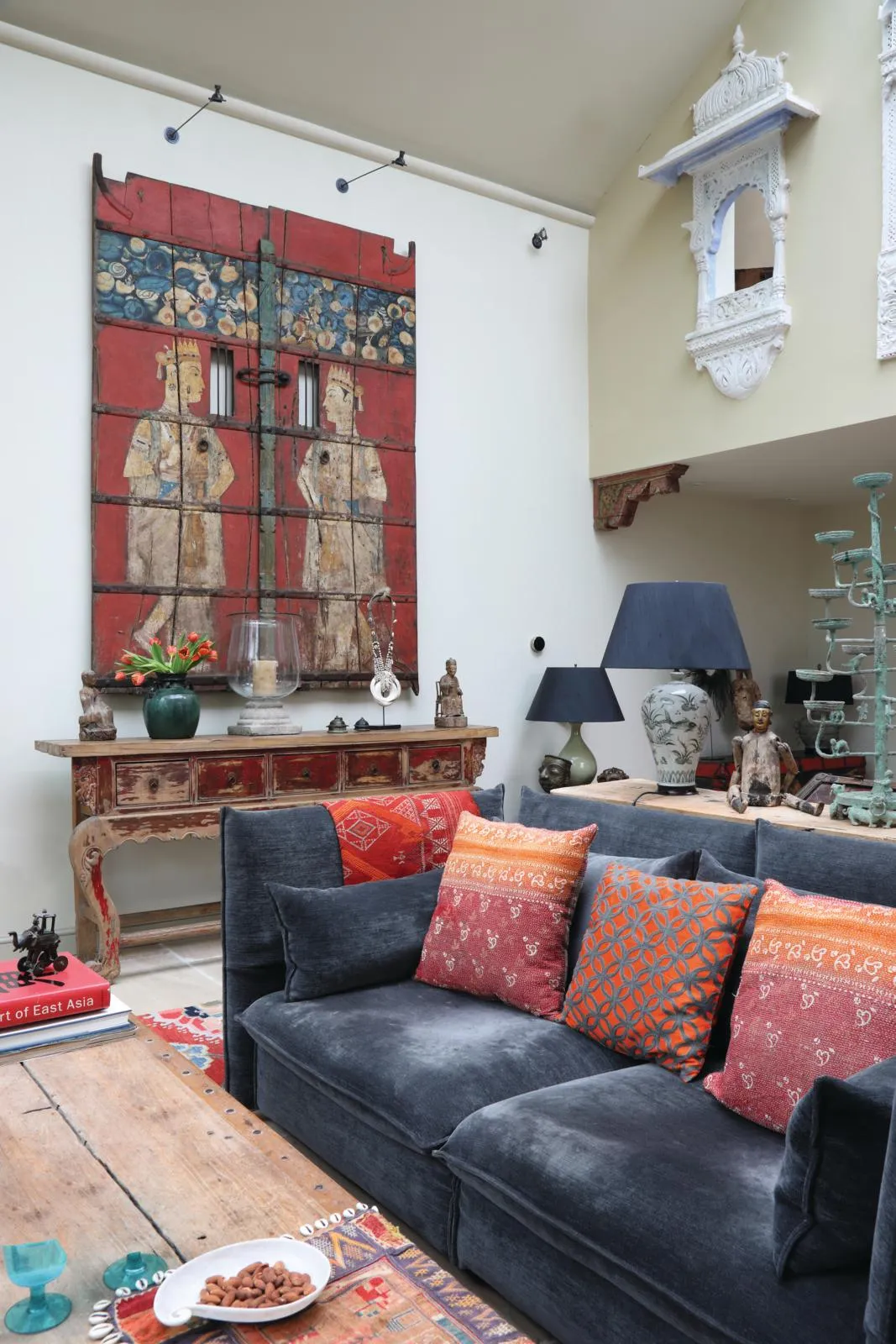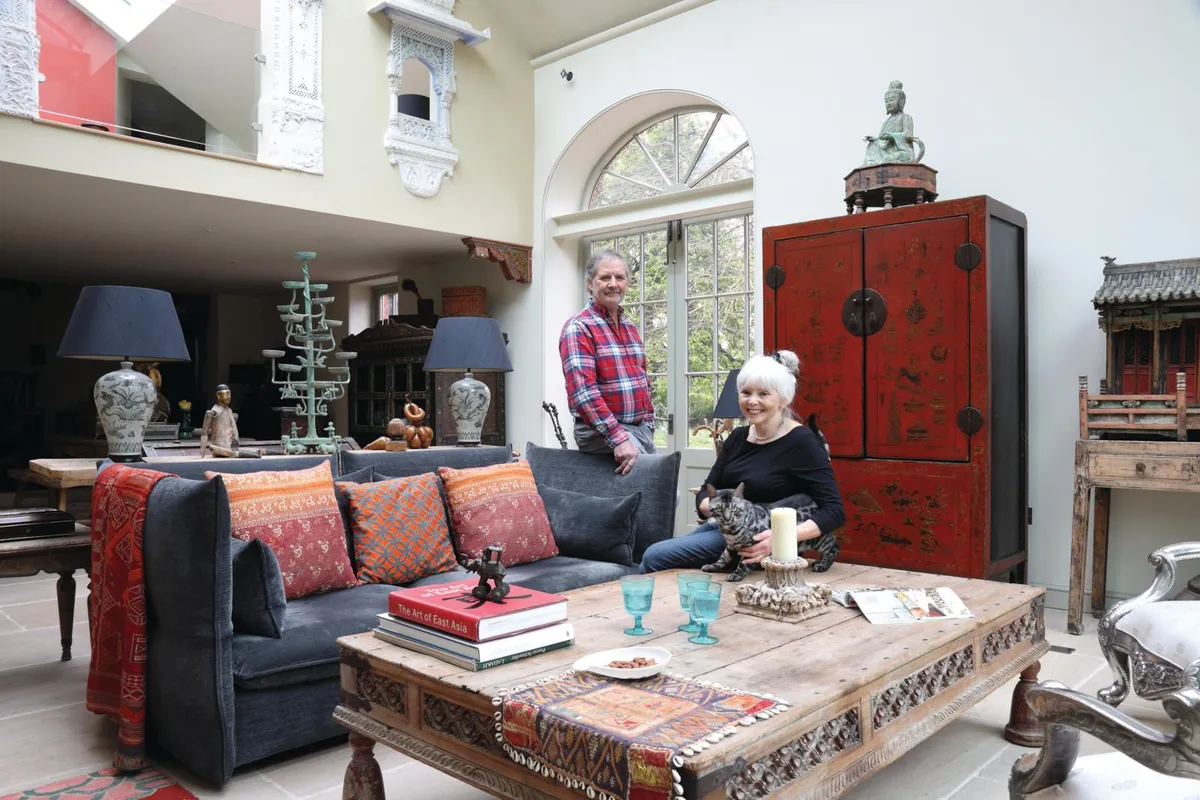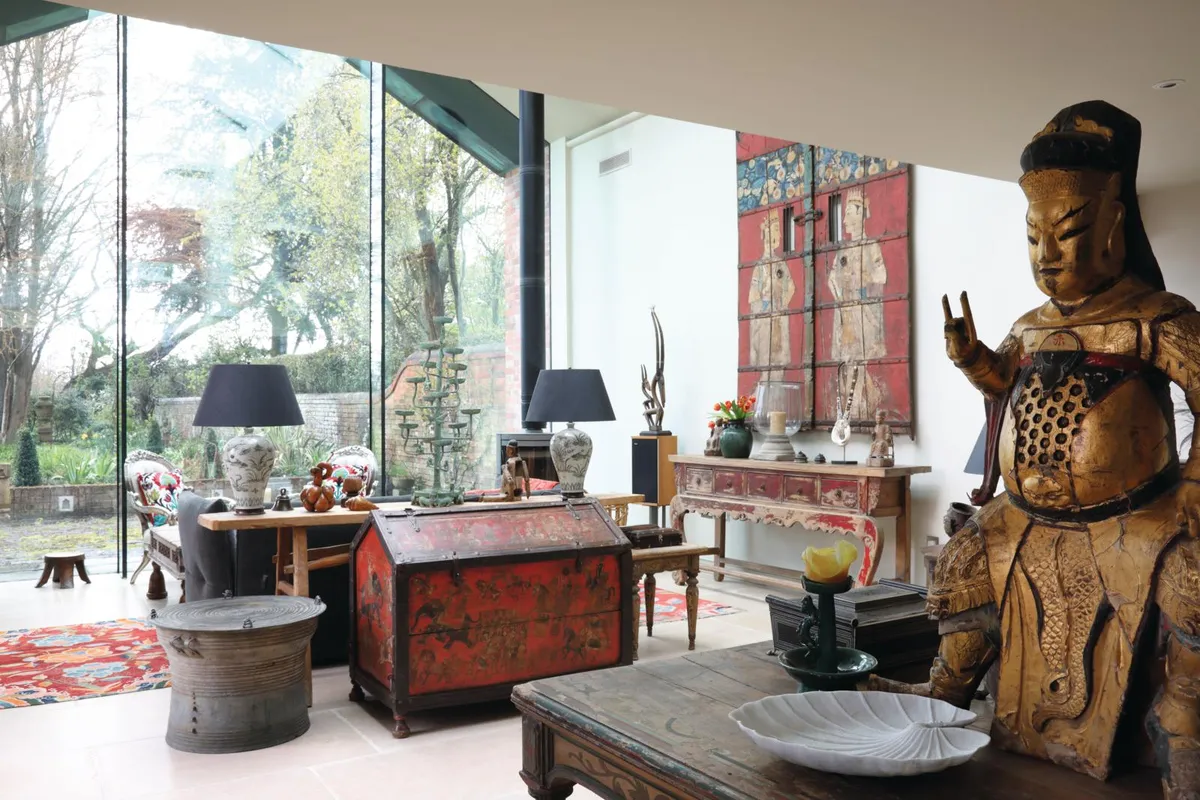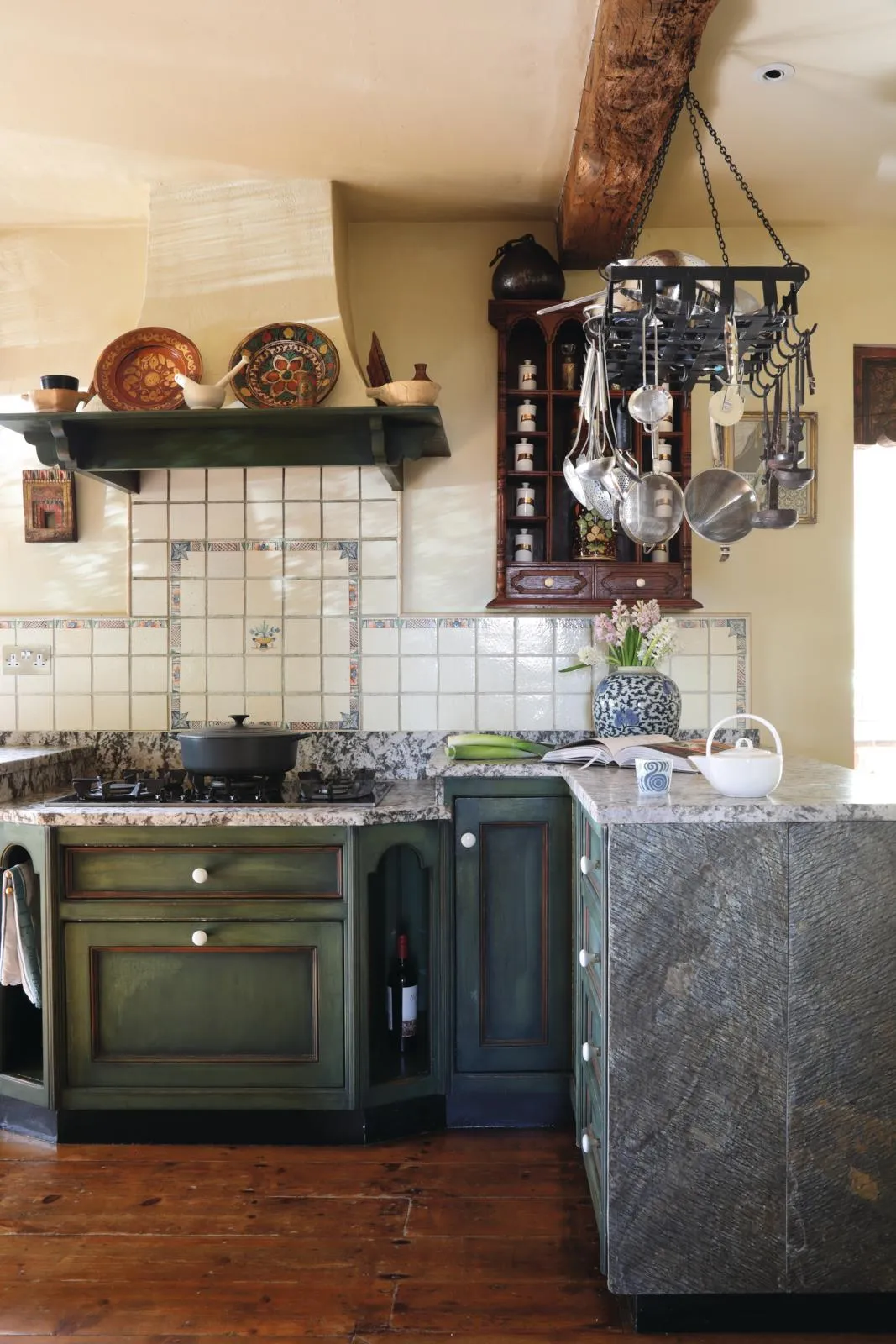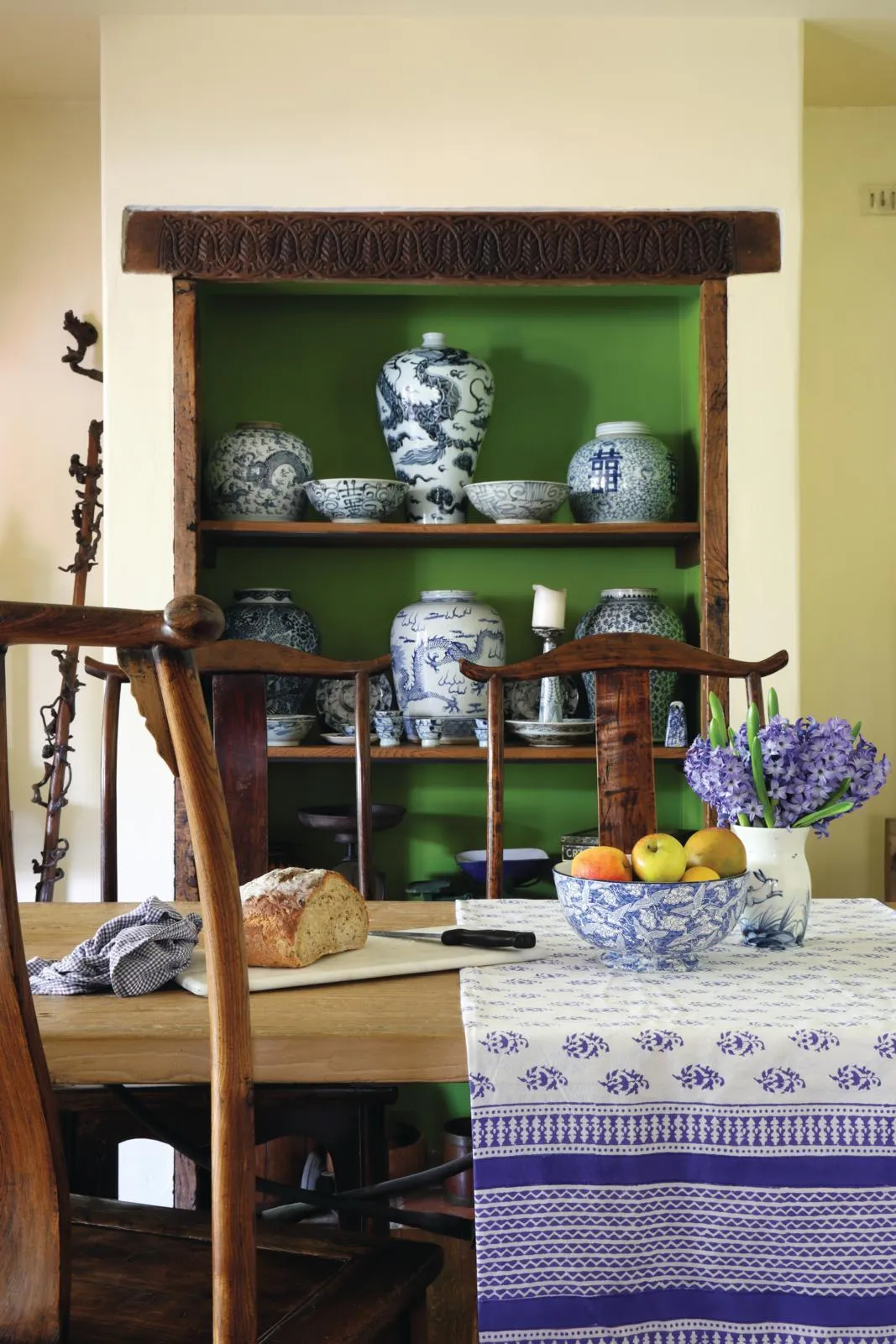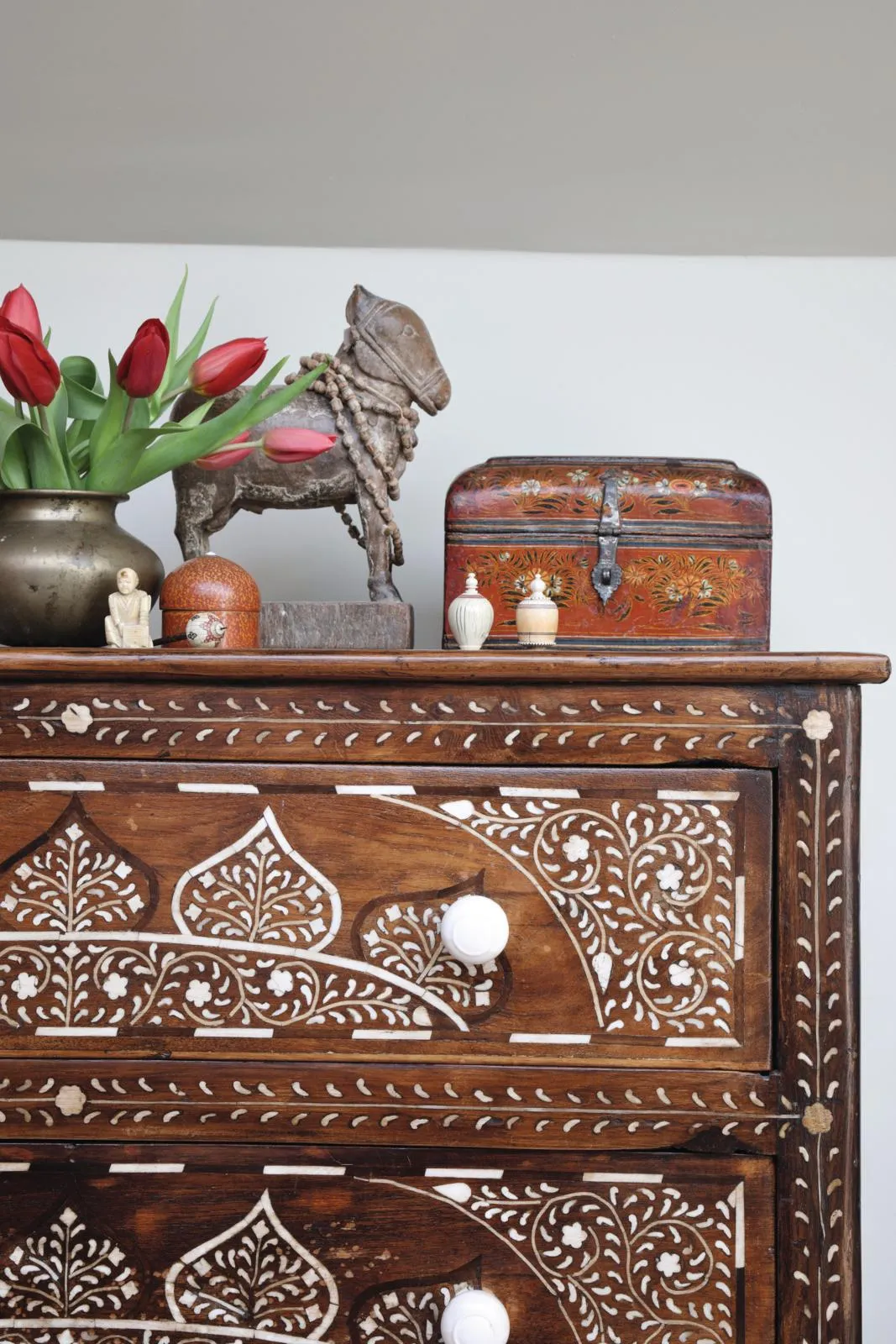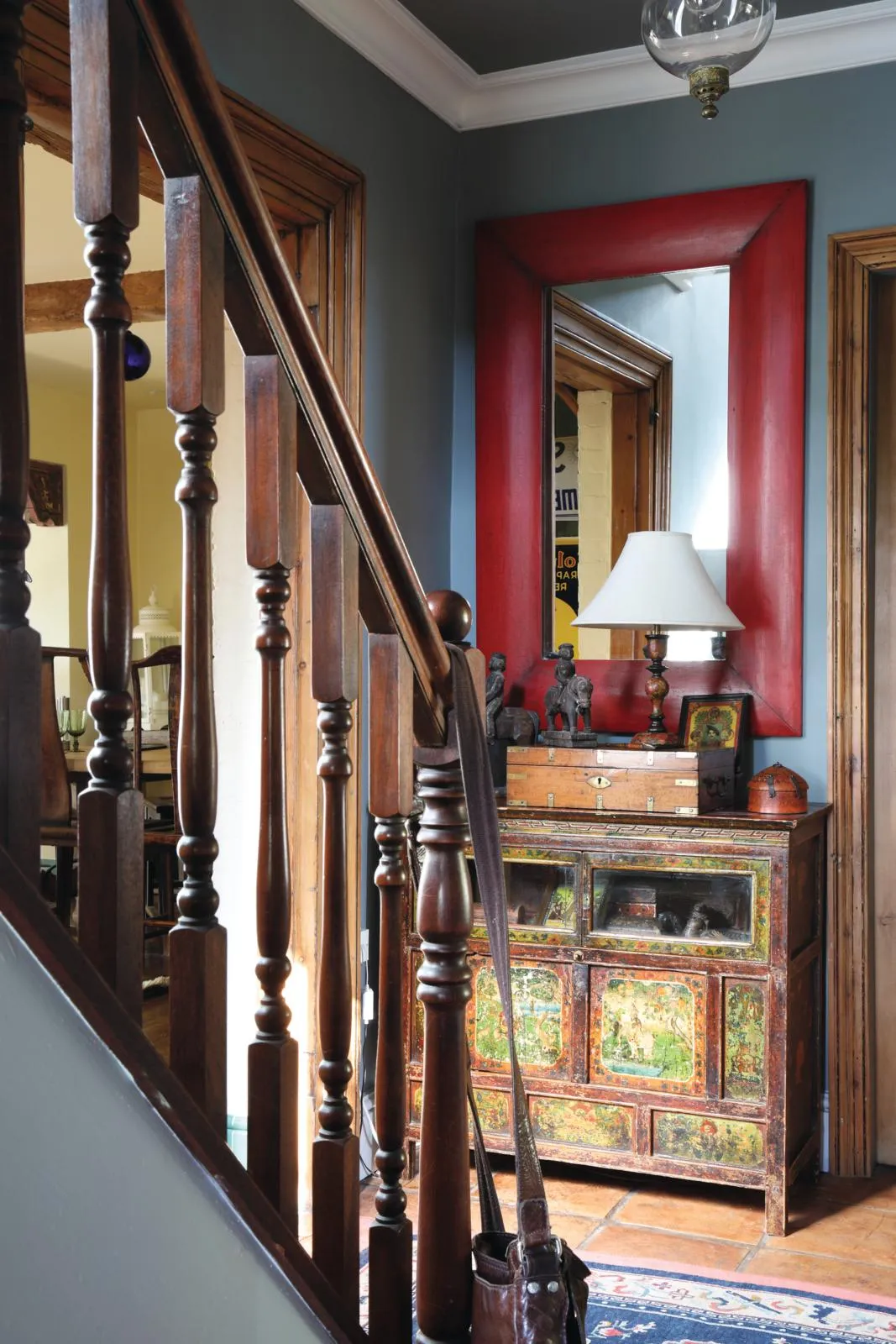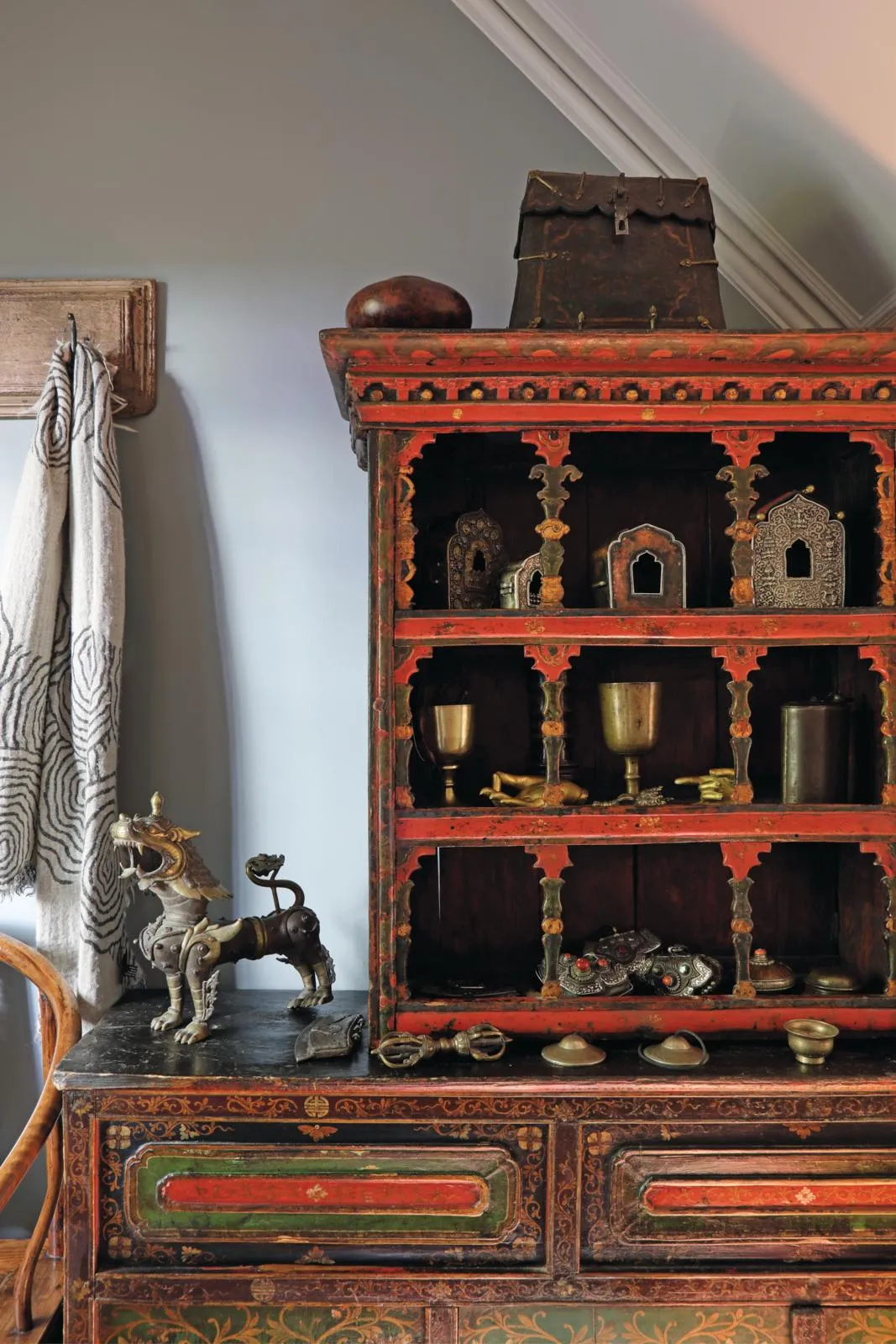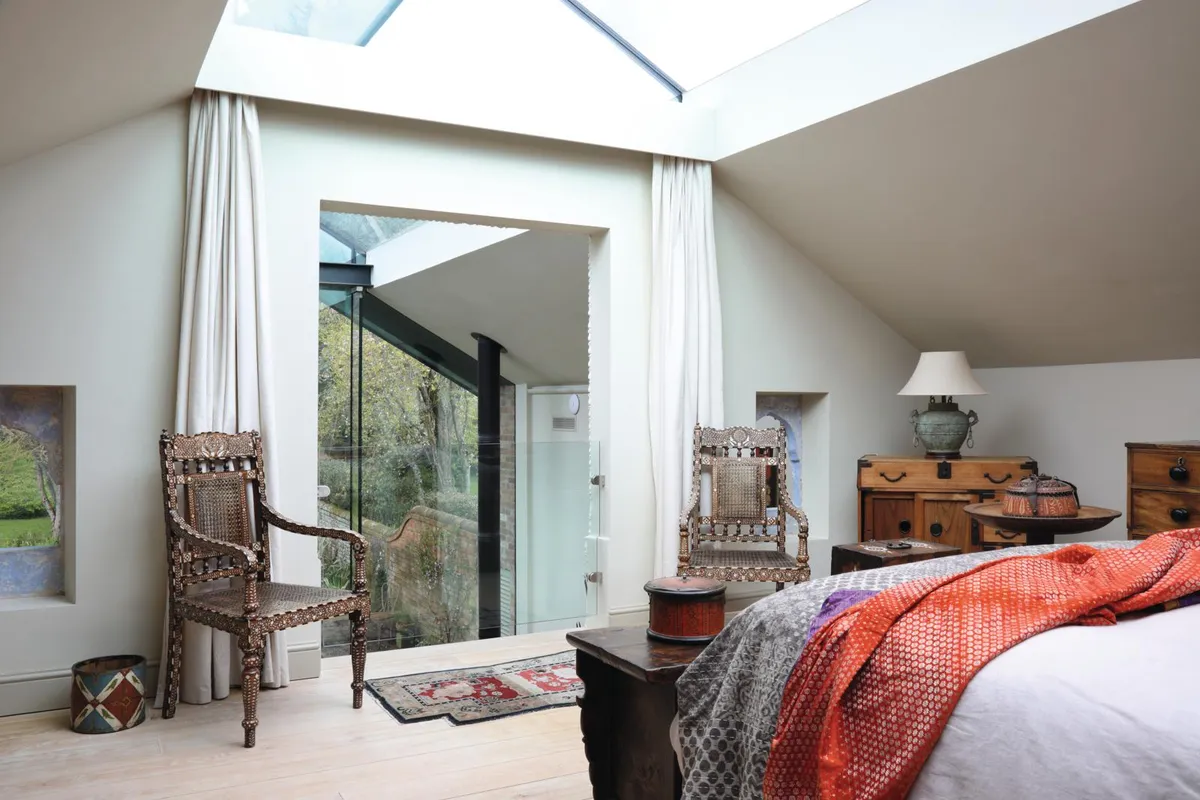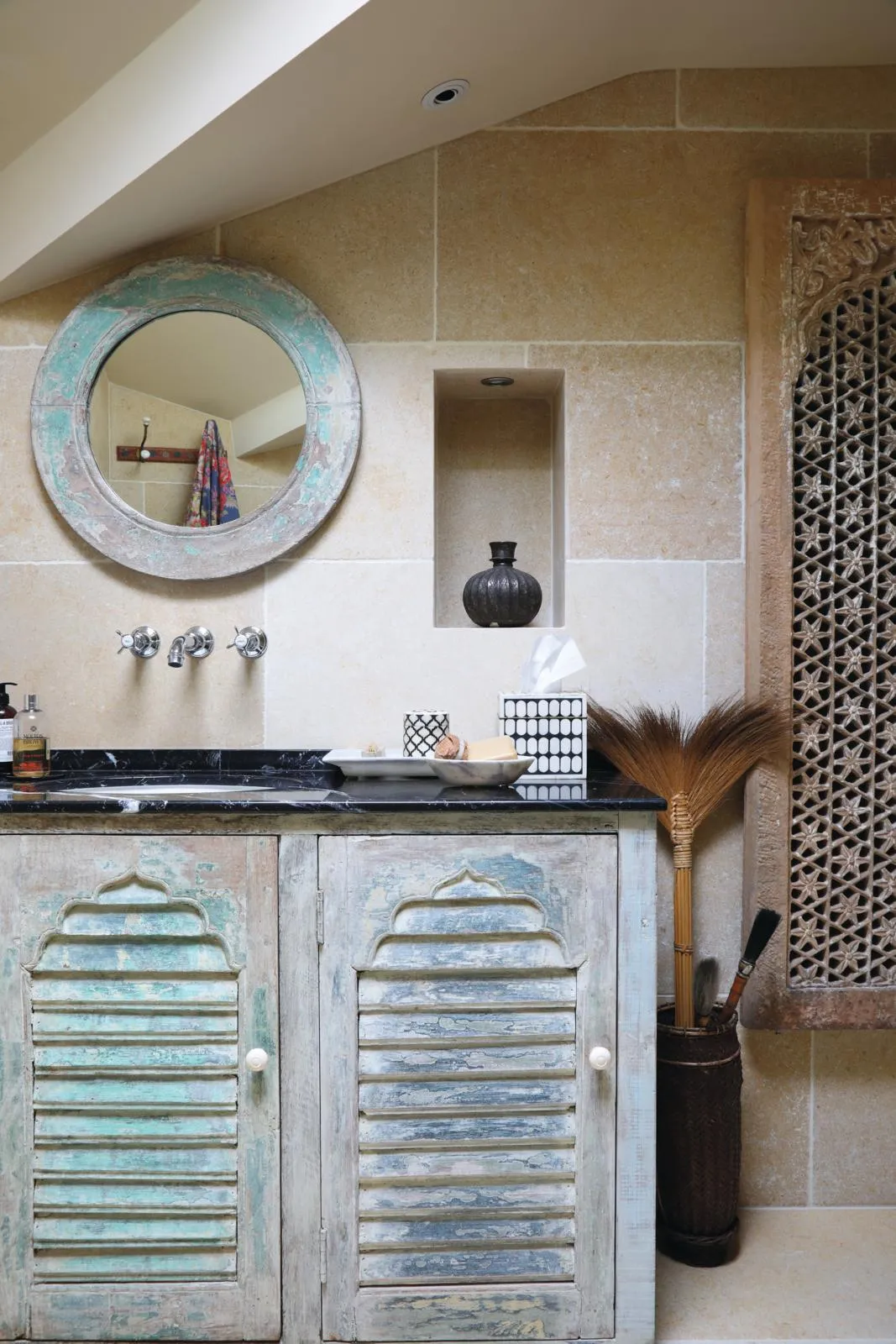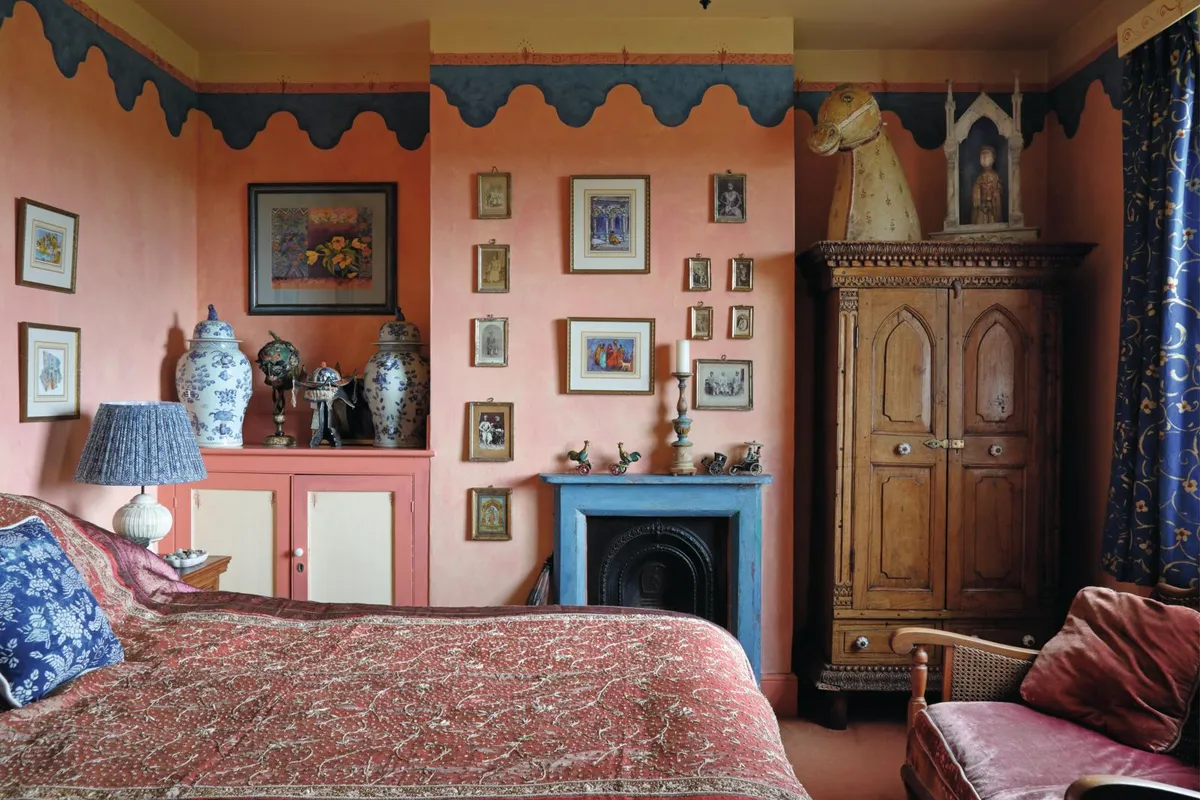Marion Lightbown first fell in love with India and its handcrafted furniture, textiles and homewares in the late 1970s. It was the overland trip back from Australia with her husband Richard that did it. After travelling up through Bali, Malaysia and Thailand, they bought a van in Kathmandu, and drove through northern India to Amritsar, home of the Golden Temple, via Delhi.
‘India is fantastic because it has a living culture,’ enthuses Marion. ‘It’s not just about money, it’s a soulful place. Here, we live in a world where everything is mass-produced, but in India, everything is made by a person, not a machine: the embroidery on the bed linens is done by hand, the marble plates are carved by hand. When we go out there buying, we meet the people who make these things, and the ladies who fan them while they’re working.’
On a second trip, a few years later, Marion and Richard were invited by acquaintances to stay in their house in Delhi. ‘He was Swiss and she was French and their home was breathtaking – filled with this amazing mix of Indian and European furniture,’ Marion recalls. So inspired were they by what they saw, that they promptly decided to set up Indigo Antiques, a business importing antique furniture and traditional handicrafts from the subcontinent to England.
The encounter also sparked a desire to create a home of their own filled with these treasures, a journey that began in 1991 when they bought a detached Victorian house with a secluded garden in the Vale of Pewsey, Wiltshire.
You might also like how to restore a Victorian house
The project has taken 28 years to complete, with the last piece of the jigsaw fitting into place in 2012, when a dilapidated barn at the back of the house was rebuilt as a soaring glass-fronted extension looking on to the garden. This generous, light-filled room also includes a mezzanine master bedroom and en suite. The conversion has given them ample space in which to display the many large and impressive pieces of art and furniture that Marion has secreted away over three decades of sourcing stock from India, China and beyond.
‘A lot of these things need space to be appreciated, so it’s wonderful to have this room,’ says Marion. ‘We’ve got all sorts in here. I like to mix it up: painted Jain doors from Rajasthan; a walnut altar table from Gansu, China; there’s a drum from Thailand and the rugs are from Tibet.’
There is also a Chinese ancestor house (a sacred piece of furniture often placed in the home for ancestor worship), a big red lacquer wedding cabinet, and the hand-painted dining table was probably made for a maharaja’s palace, Marion says. ‘We bought that early on and I had to fight hard to keep it. My husband would have sold everything.’
The house was much more modest when the couple moved in with their then two-year-old son, Tom. There were two reception rooms, plus a dated kitchen and dining area on the ground floor and two bedrooms, a box room and a 1960s bathroom upstairs.
One of the first jobs was to put in a new kitchen. Two pairs of Indian lattice-work doors that they had picked up on their travels were the starting point for this. ‘We decided to make one set a larder and the other a china cupboard, then the kitchen was built around them by a local specialist company,’ explains Marion.
Granite worktops and underfloor heating were added more recently, but otherwise this room has hardly changed – Marion still loves the original deep-green paint of the cupboards. The main bathroom was put in around the same time, with a wall taken down to incorporate the box room. The centrepiece was a cast-iron bath they found at Dorset Reclamation.
You might also like Annie Sloan's colourful Victorian home
Back in the early days, Marion often found herself home alone with Tom, while Richard was off on buying trips, and she would decorate to make use of the time. ‘When Tom went to bed, I would get out my paintbrush and sometimes work until 2am,’ she recalls.
After painting Tom’s room, she tackled the master bedroom, which she gave a neutral base, then ragged over with peach. ‘It was OK, but a bit dull, then my friend suggested we paint a frieze in blue. We drank quite a lot of wine that evening, but actually the colours really work. That was our bedroom until we did the extension, and I still love it.’
Of all the rooms in the house, this is the most crammed with inspiration and treasures from their travels. On the wardrobe sits a beloved antique papier mâché horse’s head, a tabernacle from Goa and a Chinese statue of the goddess Guanyin. Framed Indian photographs decorate the chimney breast, and the mantelpiece is filled with tin toys, made for the children of wealthy maharajas.
‘We brought back quite a few at one point,’ says Marion, ‘but you just can’t find them any more.’ On the walls are paintings by Ferelith Molteno, an artist who draws inspiration from her travels in India. This room also houses Marion’s collection of Chinese hats. ‘I just love them,’ she says. ‘I posted one on Instagram recently – embroidered with leaves and flowers and a tiny dolly in the top. The skill of making something like that is astonishing.’
It’s that attention to detail that Marion enjoys, and it’s evident in everything she and Richard buy for Indigo Antiques, as well as the pieces they choose to keep for their home. ‘That’s art,’ she says, ‘when someone enjoys doing something so much that they want to go that extra mile and make a fantastic job of it.’
Marion & Richard’s shop, Indigo Antiques is the UK’s largest collection of genuine Indian & Chinese antique furniture. Visit their showroom and warehouse in Wiltshire or their website Indigo Antiques to find out more.
